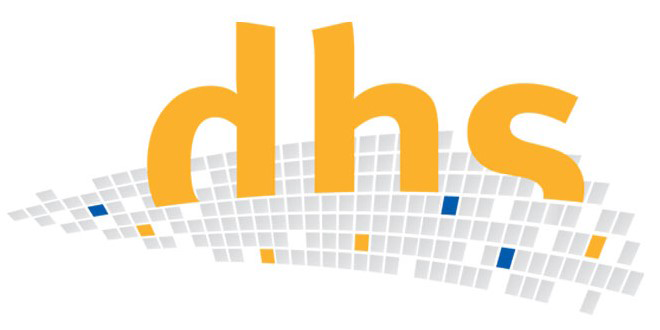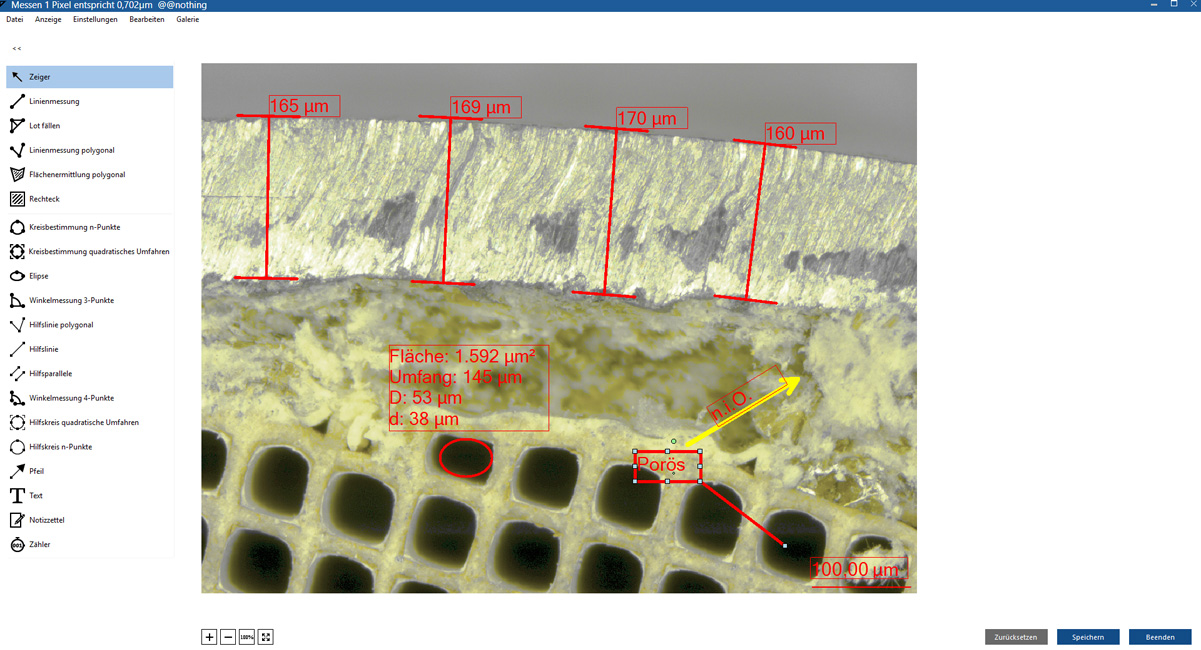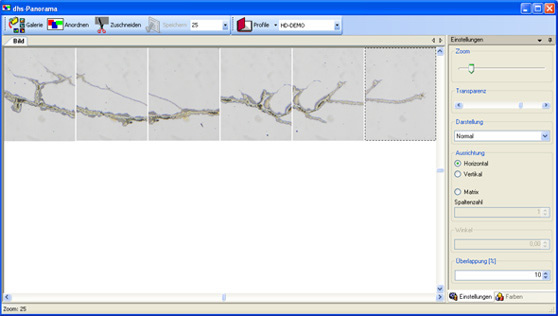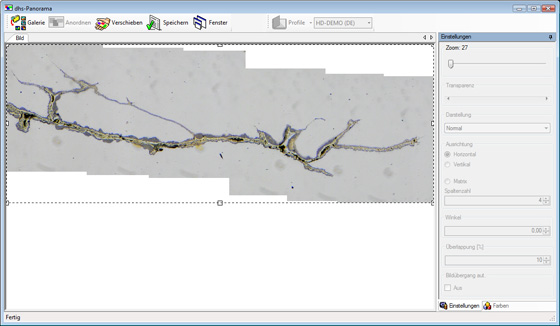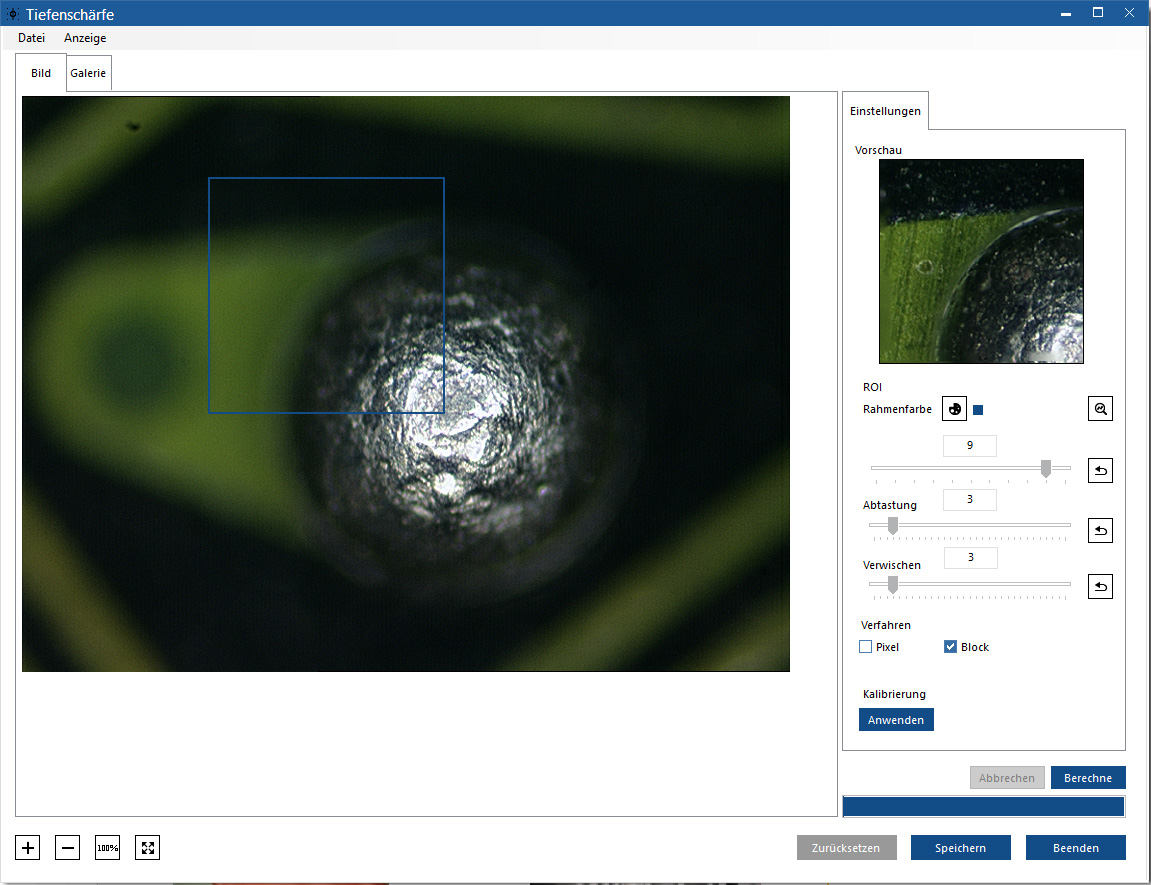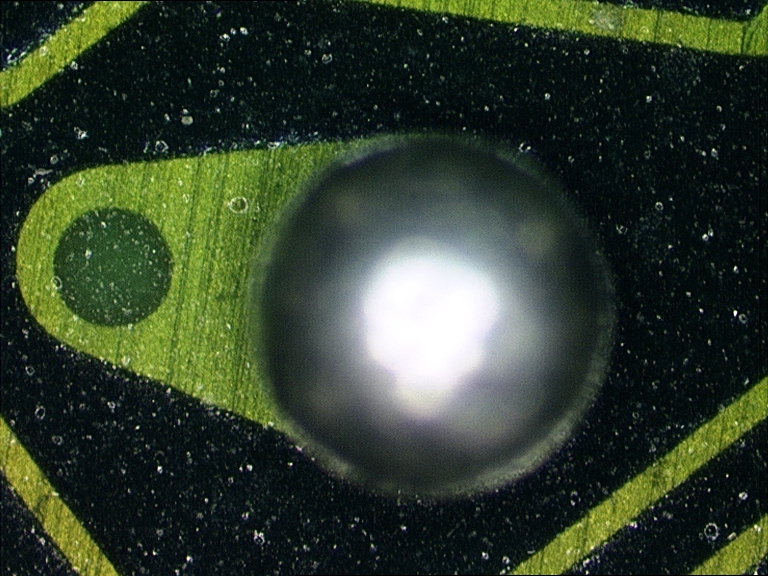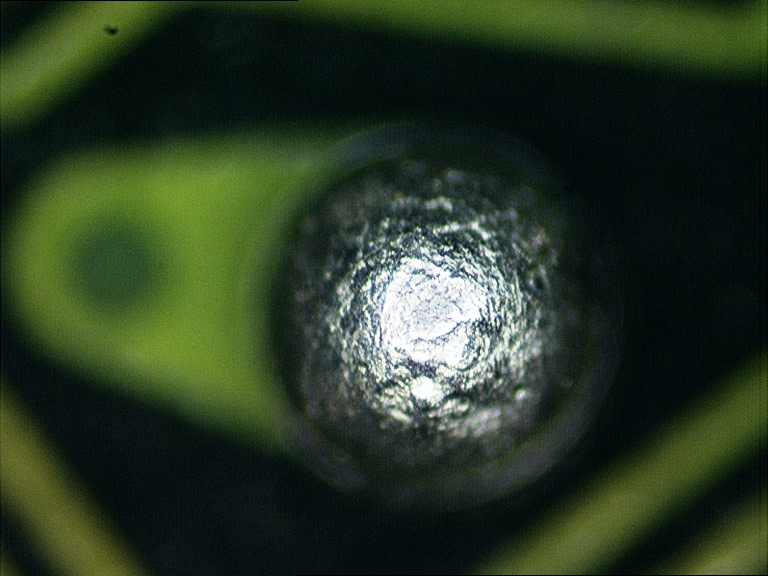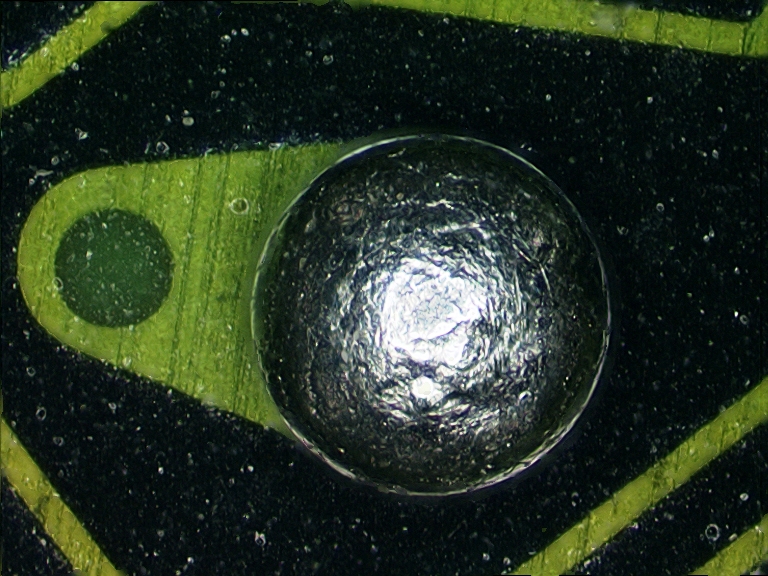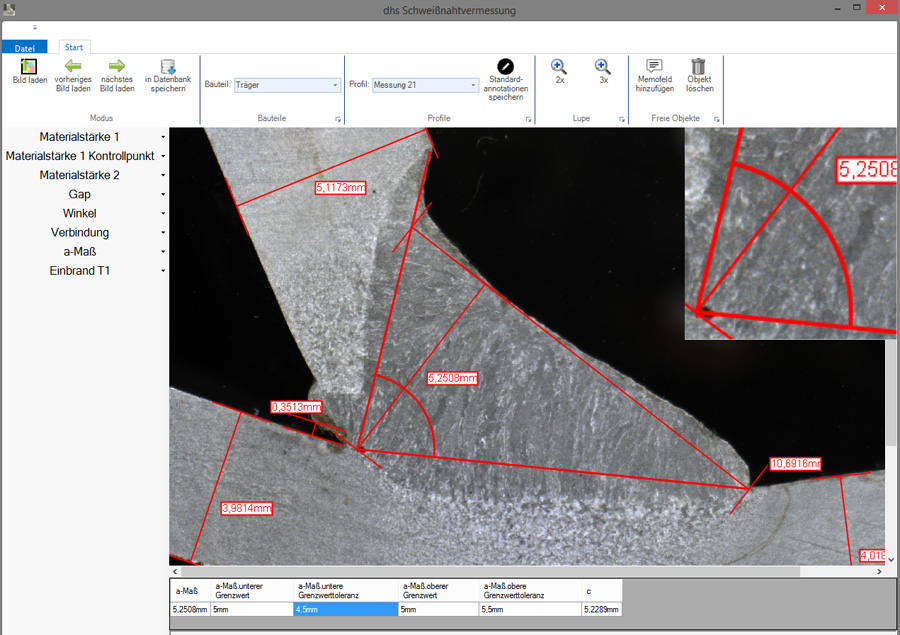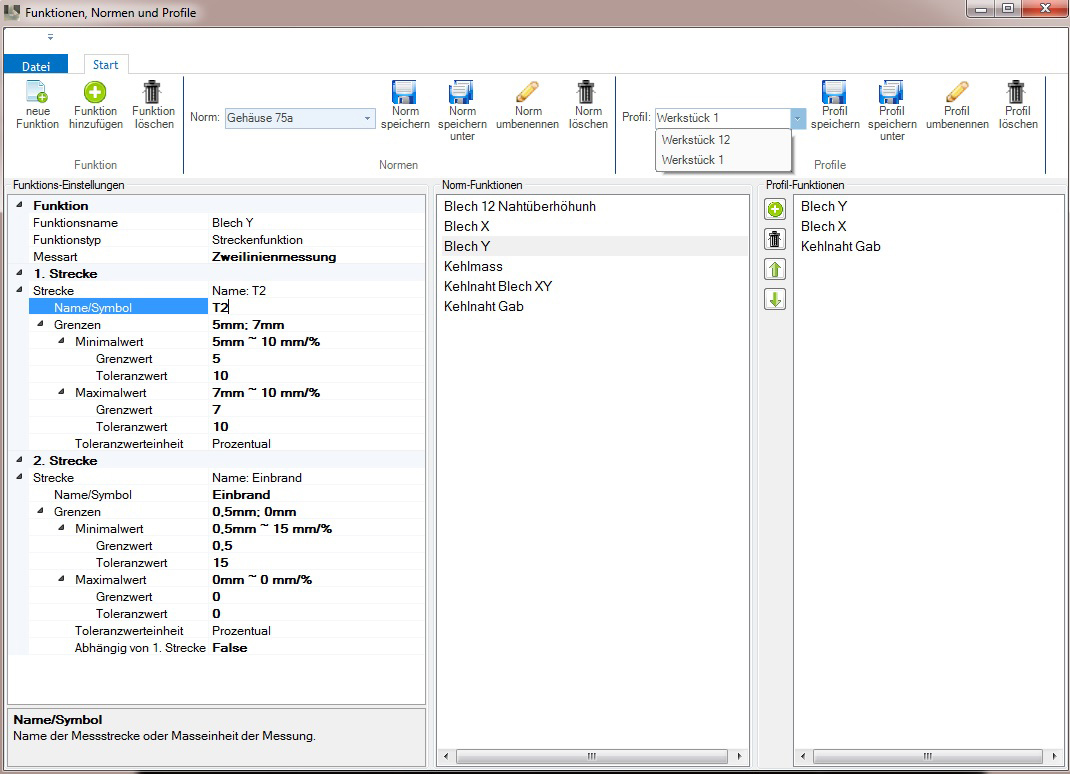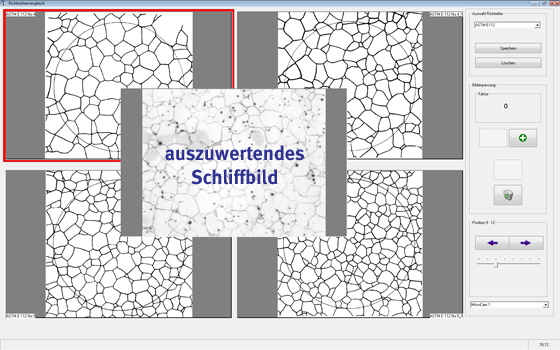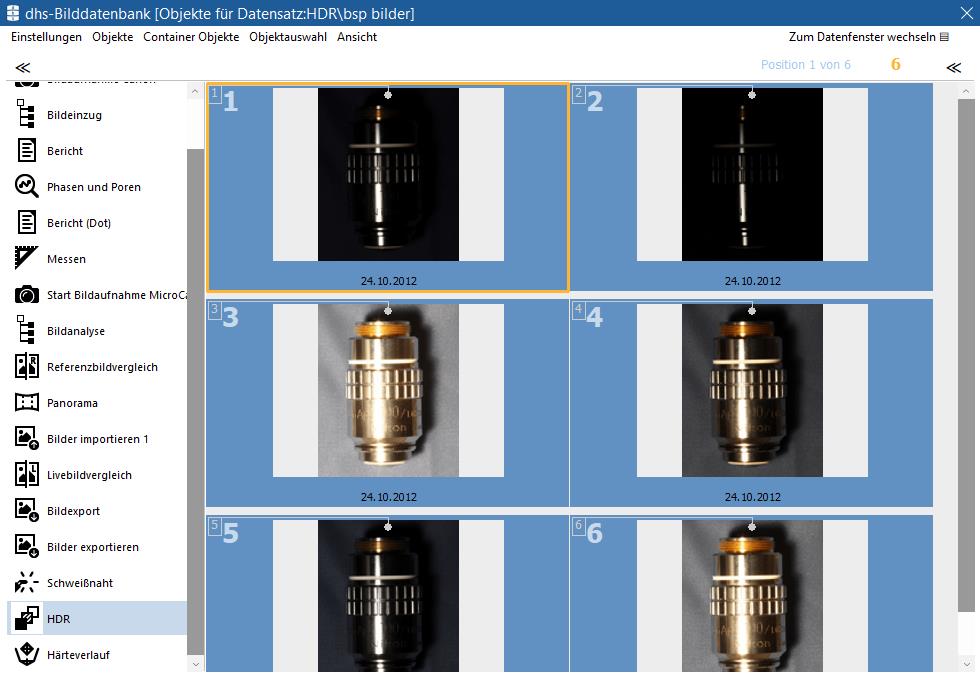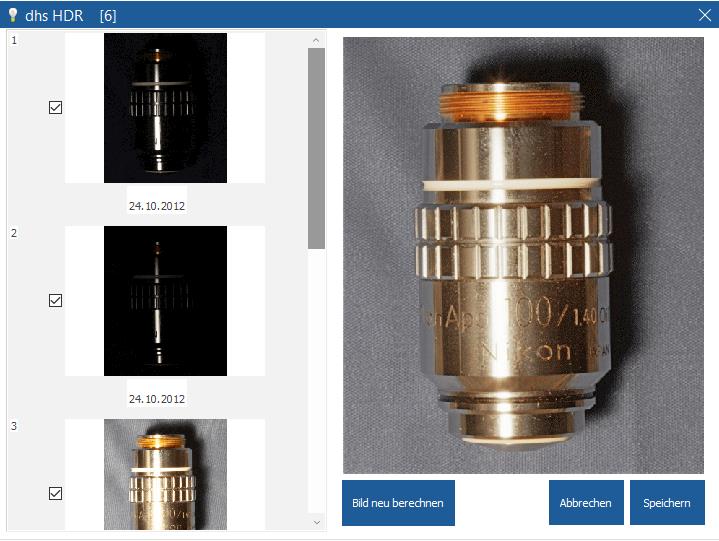
Processing
For sophisticated and powerful image analysis and evaluation, it is often necessary to post-process or improve the raw image material.
In other cases, it is sufficient to obtain information directly from the captured images, e.g. for image measurement, image comparisons or merging individual images into one single image.
The Image Processing product group includes all the software tools needed to
- optimise
- combine
- measure
- compare
- manage and forward
the previously captured images.
-
Measurement:
2D measuring and labelling of images.The dhs software module Measurement enables two-dimensional measurement and labelling of previously saved images. With its innovative multilayer technology and many convenient features, it is used for a wide variety of applications.
Some of the key features at a glance:
- line, area, circular and angular measurements, design throat thickness, simple coating thickness measurements (freely configurable)
- Overlays, labelling and scaling bars, arithmetic operations
- Angle measurement (3-point or 4-point)
- Numerous helpful functions and possibilities of saving: Ruler, zoom, crosshairs, raster, measurement preview
- “catching” the origins and end points of existing measurements
- Wide range of zoom and display options; comprehensive display of measurement lines and labels for each measurement type
- gallery function and scroll function for image selectiondirectly in the measure-modul
Measuring and labelling in the image
Examples for the measurement and labelling of previously captured images with the dhs-Modul Measurement.
Calibrations are carried out quickly and easily using an object micrometer and then stored. They can be retrieved for subsequent captured images with the same level of magnification.
The user interface can be configured selecting your own tools in the toolbar; different storage options are offered at the end of the workflow and, of course, forwarding and documentation within the dhs Image Data Base.
Detailed information can be found in our
Data sheet Measurement (PDF: 787 KB) Download - line, area, circular and angular measurements, design throat thickness, simple coating thickness measurements (freely configurable)
-
Panoramic image:
Used to combine several images in X- and Y-axes.hs-Software tool is used to combine several images in the X- and Y-axes. All too often, magnified objects cannot be displayed in one image. By producing individual, overlapping images of a sample, you can automatically create a synthesised total image on a desktop. This module even can be used with images from stereo microscopes, which has a lateral offset according to the construction principle and support for images acquired in meander form!
The panorama image is now automatically merged into one image, without any loss of resolution and/or detail.
The images can be arranged horizontally, vertically or in a matrix on the desktop. The resulting image can be cropped later – all settings are saved in profiles and can be retrieved at a later time.
Detailed information can be found in our
Data sheet Panoramic Image (PDF: 345 KB) Download -
Depth of field:
Compensates for poor depth of field.The dhs software module Depth of field compensates for poor optical depth-of-field by merging multiple individual images with different focal levels. The blurring is caused by elongation of samples in the Z-axis, when capturing images at a high magnification and/or smaller aperture settings. The software uses the image elements of varying sharpness from multiple focal levels to calculate a completely focused resulting image. It is also suitable for reflected light microscopes and transmitted light microscopes, as well as stereo microscopes.
Previously captured images are detected by the software and the focused image areas are extracted. There is also the possibility of selective correction of particularly relevant image areas (ROI). The completely sharp result image appears at the push of a button. The calibration can be assigned.
-
Weald seam:
For evaluation of weld seam and welded joints during the manufacturing.The dhs software module Weld Seam was especially developed for evaluating welded joints and supports DIN EN ISO 5817 with the measuring functions.
All the necessary testing procedures are combined for each component in repeatable measurement profiles. Test procedures are carried out without loss of time alongside the production process. By the combination with the basic module of dhs Image Data Base it is possible to generate statistical evaluations of all measurement process to faciliate the long term assessment of the entire production. All previously recorded images, measurements and data can be compiled to form a test report.
- Measuring functions (thickness of workpiece,thickness of seam, length of seam, weld penetration, weld elevation, notches, cavities, gap width, design throat thickness, angle of weld fillet, angle of weld toe, drop of perpendicular)
- Measuring lines can be edited, digital zoom
- Measurements are continuously displayed
- Measurement of target value in the image
- Adjustment of warning limit from measured value
- Group measuring functions into profiles to facilitate reproducing individual measuring processes
- International standards and customer-specific component standards are recorded for each measurement process
- All images and measurements are stored in the dhs Image Data Base. There are special data base fields for this purpose (for example, measurements, their specifications, their results) to allow precise correlation
- Data is selected using the previously created data base fields
Detailed information can be found in our
Data sheet Weld seam (PDF: 760 KB) Download -
Metal Sections:
For comparing materialographic standard images.The dhs software module Metal Sections is an ergonomic tool for comparing materialographic images of specimens with a microscope. Live or archived images on the PC monitor are used instead of working with eyepiece inserts or wall charts.
Standardised or self-generated control series with up to 30 images are displayed along with the control image. The programme includes one digitised control series of your choice. You can obtain additional ones for a nominal fee.
Control images stored in the dhs Image Data Base are loaded automatically in the background. The image to be analysed for comparison is visualised in the centre of the image.
Detailed information can be found in our
Data sheet Metal Sections (PDF: 353 KB) Download -
HDR:
For optimising the lightning of several images from one probe.The HDR (High Dynamic Range) module is used for samples that are difficult to illuminate (e.g. metals with reflections and bright lights) to determine the optimum lit image. During image capture, several images are created with different brightness and contrast distribution.
The dhs imaging tool HDR then calculates the best lit image result by mouse click.During image capture, the sample should be focused consistently and not moved. Only the lighting can be varied. The brightest and darkest image are then selected by mouse click.
The resulting image is archived in the dhs Image Data Base and you have the option of including it in your reports.
Detailed information can be found in our
Data sheet HDR (PDF: 279 KB) Download
